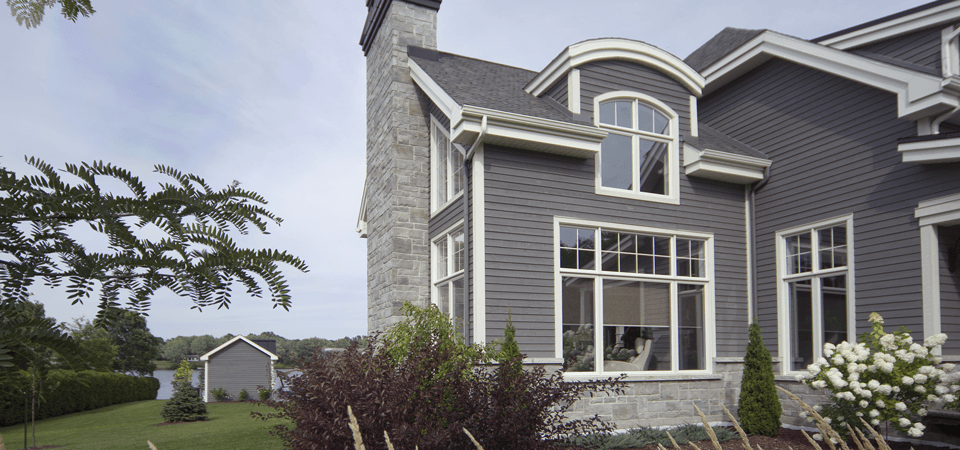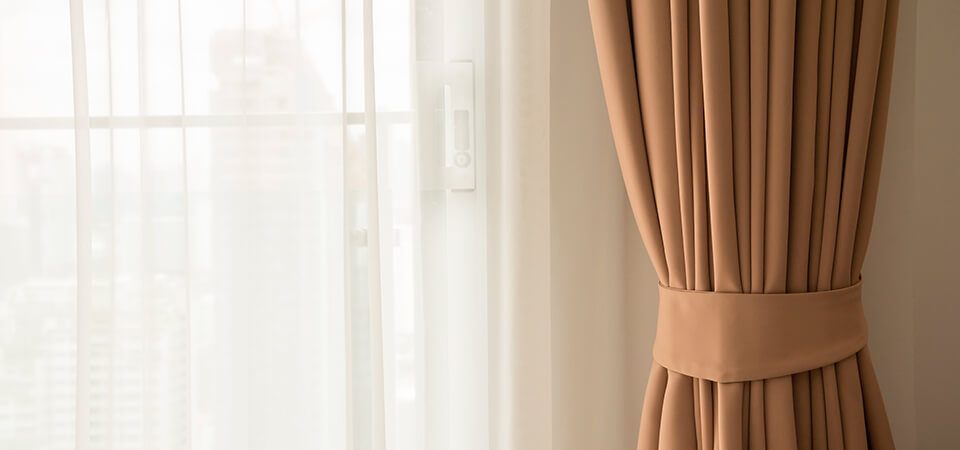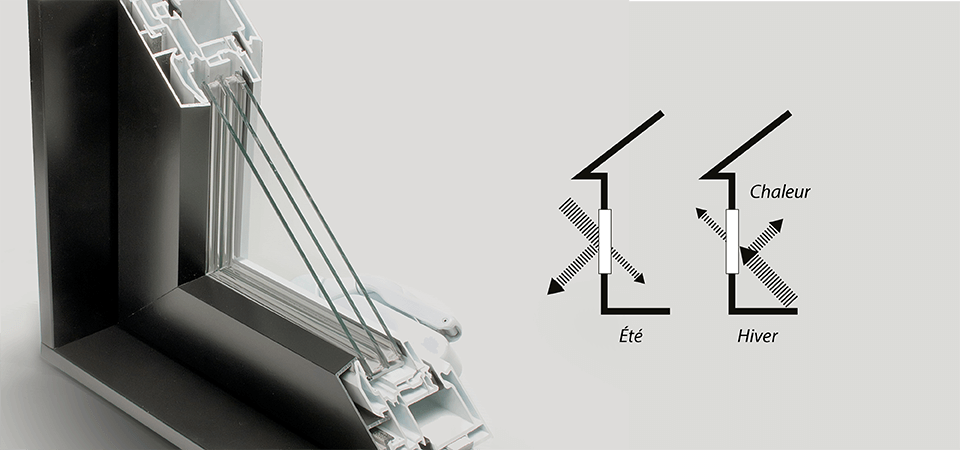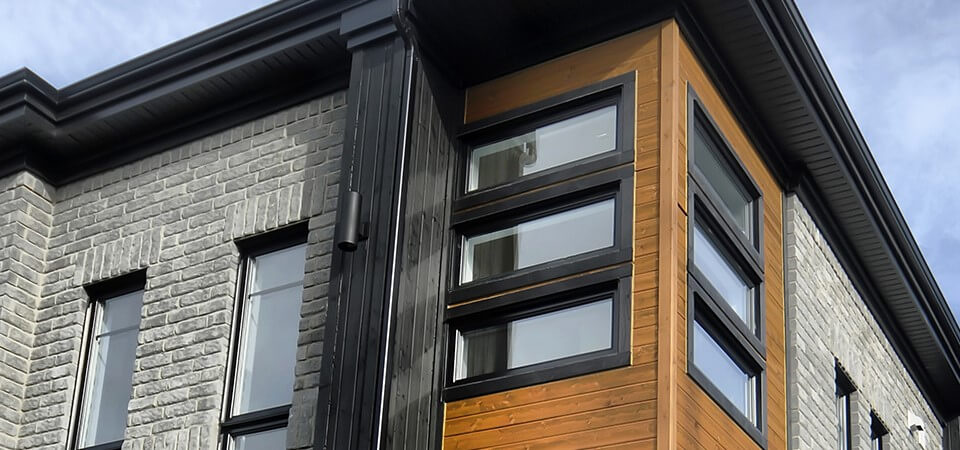Have you ever noticed that the same house can often have different types of windows installed? Depending on the location and function of a room, certain windows may be more appropriate because of their specific properties.
The most common models that you’ll find in stores are casement, awning, hung, sliding and architectural windows. What makes these windows different from one another?
Casement windows, commonly called “crank” windows, open to 90 degrees, providing optimal ventilation. They are the most popular model thanks to their versatility—they blend in with all styles of homes. This type of window also offers:
- a strong multipoint lock for your security;
- the option of double or triple glazing;
- an opening control device, where required by the National Building Code of Canada, for your peace of mind.
Awning windows also have a crank mechanism but swing open in an upwards motion. Compared to a vertical window, their wider opening provides excellent ventilation. A few advantages of awning windows:
- esthetically pleasing;
- limited opening, which offers protection from the rain;
- more secure, because they don’t open fully.
Hung windows open by sliding the pane upwards. A single-hung window has a fixed section at the top and a moveable pane at the bottom. A double-hung window has two moveable panes. Why choose hung windows?
- Their panes tilt out for easy cleaning.
- Their counterbalance system makes opening the window almost effortless.
- Their sash lock makes them highly secure.
A sliding window, whether single or double, opens by sliding the pane horizontally. Its opening system is perfect for small spaces. This type of window is often seen in basements. A sliding window is characterized by:
- panes that tilt inward for easy cleaning;
- its impeccable, streamlined interior finish;
- its ease to use.
Because their one-piece frames can be bent into different geometric shapes, architectural windows provide your home with larger glass surfaces. They can also be used as door and window transoms.
Tilt-and-turn windows are sometimes available from certain manufacturers. These European-inspired windows come equipped with a special handle that allows them to be both tilted inward from the top and swung inward like a door.
Depending on current trends, it’s possible to combine different styles in the same window. For exemple, dual casement-awning windows are often seen in minimalist decors.
It is important to note that your choice of model may not be available in all materials. A professional will be able to recommend the combination of model and material that blends in perfectly with your home.
Other articles in this category
- What Factors Affect the Cost of Windows?
- Securing Your Doors and Windows
- Purchasing doors and windows: The process and how we can help
- Choosing the right colour for your windows: 4 tips to guide you
- Installing doors and windows: Planning ahead in 4 steps
- What material should I choose for my windows?
- What kind of budget should I set aside for purchasing doors & windows?
- Taking accurate measurements: a must when shopping for doors and windows
- 6 things you should know when purchasing windows
- Tips from a pro: choosing new windows





